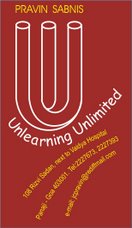Over the weekend, responding to a call from my
friend, Gopal Bhargava, I was in Kanpur to conduct training for JCI Kanpur
Industrial and also for the IMA, Ophthalmologists’ Society and students from
seven schools. This Monday Muse is triggered by the experience of travelling to
Lucknow airport to board my return flight scheduled to depart at 8am.
The organisers told me that it would take just 75
minutes to travel the distance from Kanpur to Lucknow. They suggested that even
if I were to leave Kanpur by 6am I would reach by 7.15am. When I insisted that
I wanted to leave at 5am, they told me they knew better. But I remained firm
and eventually reached the airport by 7.30am... just in time to rush through
the formalities!
Interestingly, they did not err in their estimated
duration to cover the distance. So what went wrong? The taxi reported late. A
brief stop for tea turned time consuming. All this delay was compounded by
traffic that steadily increased after 6am. The vehicle and the driver were
slow. The distance remained the same but the duration of the journey had
doubled.
So often we presume that the duration to cover a
particular distance is the same. We ignore that variables may occur in the
start-off or the quality of the vehicle or the skill of the driver or the
traffic on the road or delays on the way or even breakdowns! All this factors
need to be considered while planning a new journey across the same distance
that we may have travelled before.
Experience can condition our minds to look at things
in a rash way. The journey will be better if we accept that duration is
affected by changing variables in the attitude and approach of the traveller as
well as external issues that surface on the way. Time depends on the journey,
not on distance. The play ‘Zoo Story’ has a pertinent line: ‘you have to go a
long way to cover a short distance’.
The same distance at different times will see
duration differ
we must BE BETTER at visioning the variables that may occur…
we must BE BETTER at visioning the variables that may occur…
- Pravin K. Sabnis
On
Lucknow-Mumbai flight.


